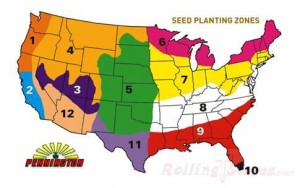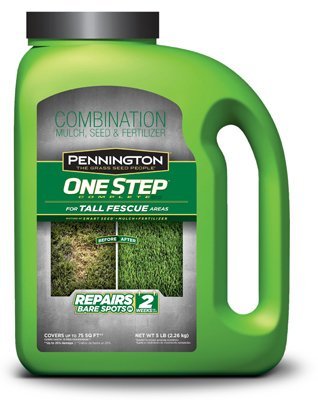5 Lb. Jug Covers 60 Sq. Ft.
Contains a combination of grass seed, mulch and fertilizer
- Needs half the water of other seeds
- 80% thicker
- Everything you need — mulch, seed & fertilizer
- Good disease and insect resistance
- Guaranteed to grow
Planting Specifications
Daily Light Required: Full sun to medium shade (4-8 hours of daily sun)
Sun Tolerance: Sun & Shade
Grass Color: Dark green
Grass Texture: Medium to Fine
Drought Tolerance: High
Disease Resistance: High
Foot Traffic Tolerance: Medium

Pennington Seed Zones
Planting Zones: All
Recommended Planting Dates: Early spring or early fall
Planting Rate: New Lawns: 6 lbs/125 sq ft; Overseeding: 6 lbs/150 sq ft
Planting Depth: 1/4”
Germination: 6-10 days
Mowing Height: 3”
Planting Instructions
New Seeding
- Prepare the soil by tilling to a depth of 4-6 inches.
- Conduct a soil test to be sure your soil has the proper nutrients it needs for a healthy lawn.
- Sow the grass seed by evenly spreading according to the recommended seeding rates.
- Rake, harrow, or otherwise work the seed into the soil 1/4″ deep.
- Keep the area well watered until the seeds germinate and the seedlings have grown sufficiently to establish a lawn, then water as needed.
Overseeding or Re-Seeding
- Before overseeding, it is important to prepare the soil.
- Conduct a soil test to be sure your lawn has the proper balance of nutrients.
- Mow or clip the existing grass as closely as possible.
- Remove clippings and rake, harrow lightly, or aerate the soil where there is existing lawn. This will allow the new seed to make contact with the soil.
- Sow the seed and gently rake to cover.
- Keep the lawn moist until seedlings are established, then water as needed.
Undesirable Lawns
Rid your lawn of undesirable grasses following the steps below so that you can establish a desirable lawn:
- During any growing season, spray the established undesirable turf with a non-selective herbicide labeled for lawn use. Follow the directions on the label.
- After the lawn turns brown, continue with your seeding program as outlined above. Be sure to start with a soil test or a complete lawn fertilizer.
Improving Bare Spots
Mow your lawn closely, then remove leaves, dead grass, etc. Rake, harrow lightly, or aerate the bare spots to prepare the seedbed. Conduct a soil test to be sure the soil has the proper balance of nutrients. Fertilize and lime if needed.

